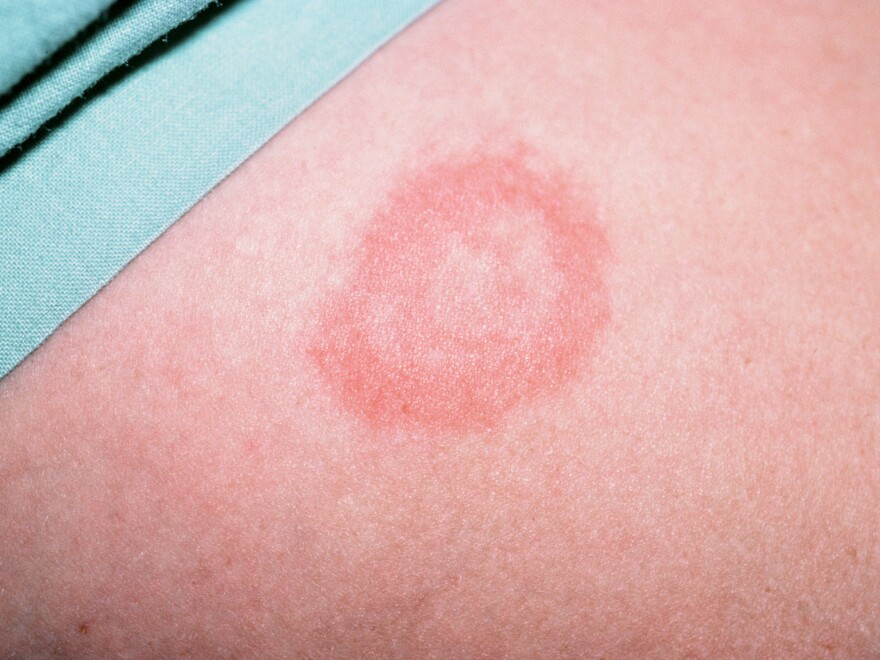It’s summer, so many of us here in Wisconsin are spending more time outside. And depending where you are in the state, being outside can come with the risk of tick bites and Lyme disease — a bacterial infection that’s spread by deer ticks. These bugs can be as small as a poppy seed, making them difficult to notice on your body.
Dean Nardelli, associate professor of health science at UW-Milwaukee, says that "anybody could become infected and develop Lyme Disease if they are bitten by a tick, but I think the driver is time spent outdoors."
Ticks are especially prevalent in wooded and high-brush areas throughout Wisconsin. If you are bitten by a tick that is infected with Lyme's disease, there are three stages of development according to Nardelli — if it goes untreated.
Stage 1: A common symptom early on (days to weeks after infection) is a bulls-eye rash on your skin. He notes not all people will develop this rash, but most will develop flu-like symptoms.

Stage 2: (weeks to months after infection) As the microbe travels throughout your body to connective tissues, you could feel aches and pains in your joints and muscles, and even some numbness, tingling of extremities and potential neurological abnormalities.
Stage 3: (months to years after infection) Furthering of the symptoms in stage two at the joints that can lead to "very profound pain and swelling of certain joints, very profound neurological abnormalities [like] memory, mood sleep disorders - things like that," Nardelli explains.
The overall presentation of Lyme disease is similar in children as well, he notes, so it is especially important to make them aware of ticks and do thorough tick checks.
"Not every tick that you would encounter has Borrelia burgdorferi, which is the bacteria that causes Lyme disease. They may, and they may have other pathogens as well," says Nardelli. "Typically the precent of ticks that are infected ... tends to be greater in the western part of the state, the northwestern part of the state, and kind of decreases as you go more east and southeast. But it's present just about everywhere."
The sooner you recognize and identify that you have been bitten by a tick or develop symptoms of Lyme disease the better. The bacterial infection is treated with antibiotics, "and that is usually sufficient to take care of the infection and halt any progression of disease," he says.
To help prevent getting a tick bite in the first place, Nardelli offers these tips:
- Be aware: ticks live in wooded areas and in places that have brush or tall grass. So if you have these on your property, maintain your landscaping.
- Cover up: "If you're in the woods going camping, the best was to prevent is to have as much of your skin covered as possible, which I realize may not be the most realistic thing in the summer," he notes. Wear a hat, long-sleeved shirts, and pants instead of shorts.
- Use insect repellant containing deet
- Tick checks: "Whether you're outdoors taking those precautions or not, it's always good to do very thorough tick checks on yourself, on your kids, looking literally everywhere on the body — through the hair, you name it."
- Treat fabrics, tents, clothing with other repellants to prevent ticks from even getting on these objects
Nardelli says it does take some time for ticks to actually transmit the bacteria, and would need to be attached for a day and a half to two days. "So if you do find a tick on you, it could be OK. It may not be something that is an emergency, but you do want to make sure that you take the tick off properly ... Take a tweezers close to the skin and just kind of work it out slowly. Don't flick it off or burn it or anything like that," he says.






